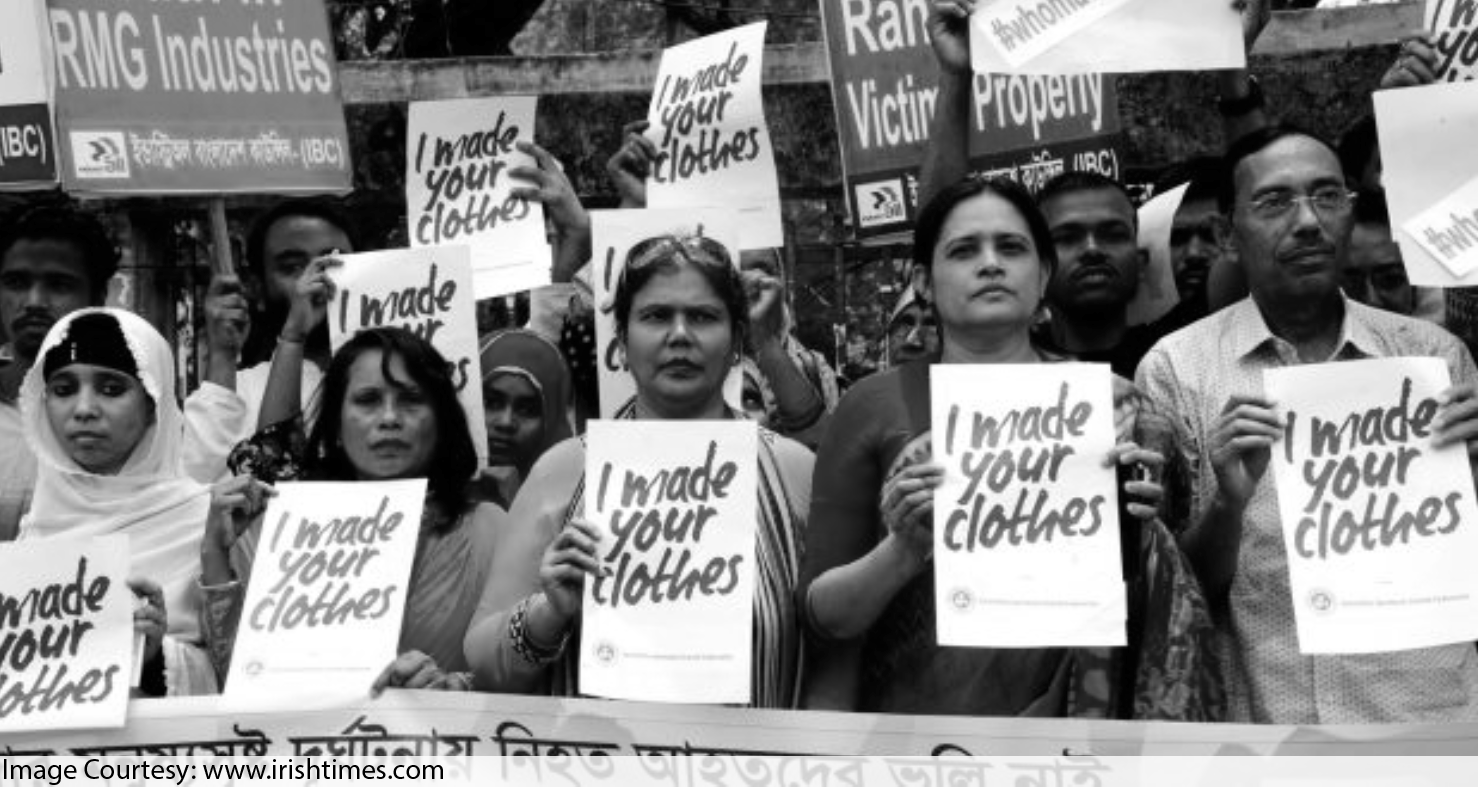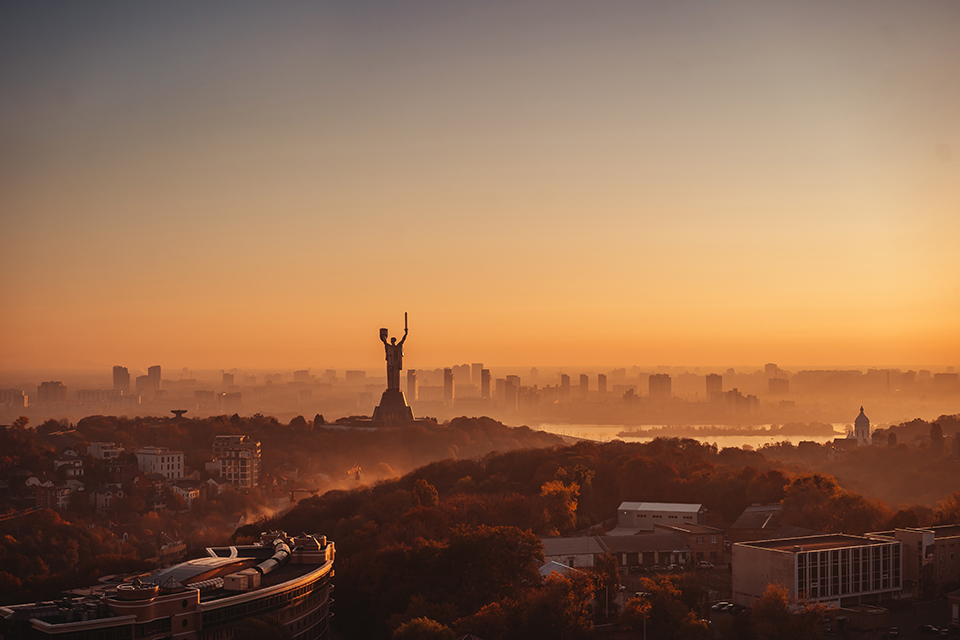“No one who works full time should have to live in poverty.”Â
This concept is embedded in human rights instruments and these words have been echoed by presidents and leaders around the world.
But the irony is, as of January 2019, so much wealth was in the hands of so few people around the globe that just eight men held the same amount of riches as half of all humanity.
This shocking inequality is the result of deliberate choices by company leadership, mega-rich individuals, and governments around the world — choices that have enabled the very wealthy to accumulate more and more, while hundreds of millions remain left behind, trapped in a cycle of poverty.Â
There is perhaps no starker example of this unfair and rigged system than the global garment industry, and the people left behind are the women who toil for hours on end making the clothes we wear.

Wages in the garment industry are notoriously low.
Most workers are not able to meet their basic needs and live-in dignity. A lack of publicly available information on the supply chains allows brands to profit, whilst workers who make their clothes are kept living in poverty.Â
Across factories in Bangladesh, India, Cambodia, Romania, Croatia, and more, the people who make our clothes usually earn less than a third of what they need to meet their basic needs and care for their families.
The reality is the garment workers are not even paid “Living Wages” but are paid Poverty Wages.Â
It is also true without the workers, the brands cannot make the dresses, and human fingers remain paralyzed without decent food and living conditions.
With the garment-making industry teetering in the wake of canceled and delayed payments from this spring, the need for garment workers to receive a living wage is as critical now as ever.Â
The potential for a Covid-19 vaccine may help the First World return to some semblance of normalcy in the coming months, but even so, the unreliable minimum wages being paid to makers in Asian countries will keep the women making our clothes living on the edge with no chance of accruing savings or financial safety nets until the next time brands decide to cut orders and withhold pay from their factories.
The Minimum Wages and Living wages of some of the garment exporting countries are:

Governments have kept minimum wages low under pressure from brands and retailers, and in a bid to create jobs and provide an economic boost to their state economies.
As a result, minimum wage rates often bear no relation to the cost of living and fall far short of what we would consider a living wage. In many garment-producing countries, the minimum wage leaves a family below the national poverty line, even though this is also set by the government.
Workers’ wages represent only a fraction of what consumers pay for the clothes because of deep-rooted structural power dynamics. A well-known example is the national kit of the England football team at the 2018 World Cup, embellished with a well-known sportswear brand logo and the most expansive England kit ever. They were sold to fans for as much as Euro 180 while the workers in Bangladesh who made them were earning less than Euro 2 per day. Bangladesh is notoriously famous for the mass production of tee shirts which retail with a price tag is Euro 29.
It is interesting to note all the price points/percentages are prefixed and what gets left becomes the pay to the worker.
A typical breakdown of Costs of a Tee Shirt which has a price tag of Euro 29.00
Retail – Euro 17.00 (includes store rent, store salaries, taxes, etc).
Profit to the brand – Euro 3.61
Material Cost – Euro 3.40
Transport Cost – Euro 2.19
Intermediary – Euro 1.20
Profit to the factory – Euro 1.15
Overhead cost – Euro 0.27
Pay to the worker – Euro 0.18
Brands may be able to outsource their production, but they cannot outsource or delegate their responsibility to uphold human rights in their supply chains.

It is time we call on the brands to:
- Commit to paying a living wage contribution on every order they place.
- Commit to using transparent and robust living wage benchmarks.
- Commit to reducing the gender pay gap in their supply chain.
Brands say paying higher wages would increase their costs and consumers want cheap clothes. It might be convenient for brands to put the onus on consumers, but the reality is that labor is just a fraction of a brand’s overall costs and would likely not meaningfully increase the prices of individual garments.
Brands put the blame on factories for not paying living wages. The reality is that in an effort to reduce costs and increase their profits, many brands aggressively negotiate with factories to produce their garments for as little as possible, forcing a race to the bottom among factories in a particular area.
What is important to note here is that brands hold the power in this relationship as the buyers. While brands may not always know if a factory is paying living wages or not, it should be part of a brand’s due diligence to ensure this is the case. And just as brands pressure factories for lower prices, they can pressure factories to provide transparency into costs of production (material costs vs. overhead costs vs. labor costs, etc.) to ensure factories are paying living wages.
The fashion industry says it wants fair wages throughout its supply chain. But it isn’t willing to pay for them.
RELATED TOPICS:#Apparel,Sanjay Lal
Leave a comment
Our email address will not be published. Required fields are marked *







4 Comments
RekhaNov 28, 2021 at 15:51 pm
The brands cannot shirk their social responsibility!! They must wake up Consumers too have to be made aware of this by more ads n spread of this information… Great article Sanjay !!
AartiNov 27, 2021 at 14:50 pm
STARKINGLY SAD...but true...one feels helpless...Sanjay thnx for making us aware of such STARK realities of life..Fodder for thought...let's hope for d best..God bless..
Deepak PunshiNov 27, 2021 at 09:46 am
Quite sad on reading the article….never imagined the low wages garment industry pays…who can take up the cause of workers is the question…? Sanjay,yet again an excellent well researched post…?
Maj Gen Ranvir YadavNov 26, 2021 at 21:04 pm
Very thought provoking article...High time somebody took up the issue. The eco system of garment industry seems to continuity of Colonial system wherein exploitation continuous by other means by European and North Americas.. Well done Sanjay... High time to stop inhuman treatment of workers..